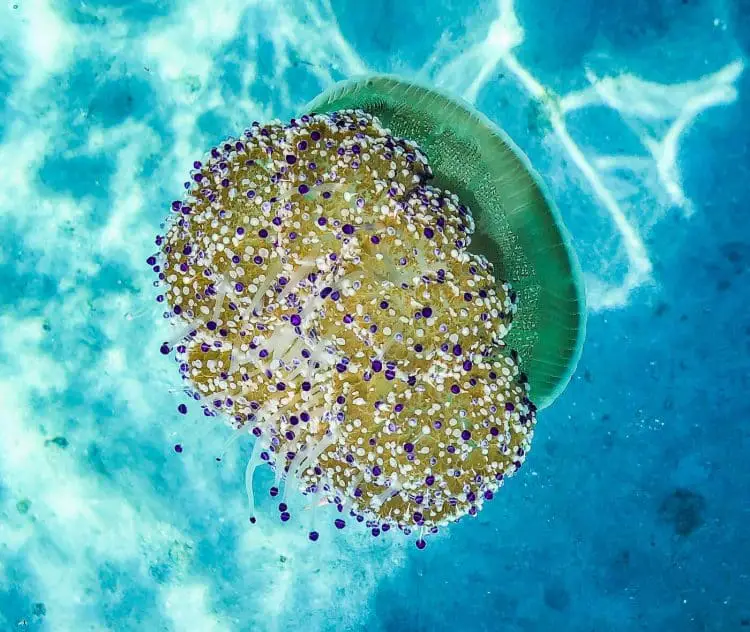This species is found mainly in the Mediterranean Sea and can reach a size of up to 35 cm in diameter. Their weakly expressed nettle poison in the tentacles can hardly cause harm to humans unless they have a genetic predisposition to respond to certain environmental influences.
Even if the nettle poison in healthy people has only a small effect, it is always unpleasant. In general, SeaHelp recommends, when in contact with the nettle poison of the jellyfish, to immediately leave the water and if necessary to rinse the contaminated areas with salt water (never with fresh water). As a proven home remedy rubbing with vinegar or the use of shaving cream will help.
The contaminated area should first be sprayed with shaving cream. Once it has dried, rub the shaving cream with a suitable object, such as a knife-back or a credit card, to release the nettles from the skin. However, if you experience severe pain, often in combination with redness, it is advisable to contact a doctor as a precaution.
By the way the fried egg jellyfish in the Mediterranean should not find its way into the pan, through its nettle poison it is considered inedible.
The photos and videos were taken with a GoPro Hero 6 and the handheld tripod El Grande from the boat.













